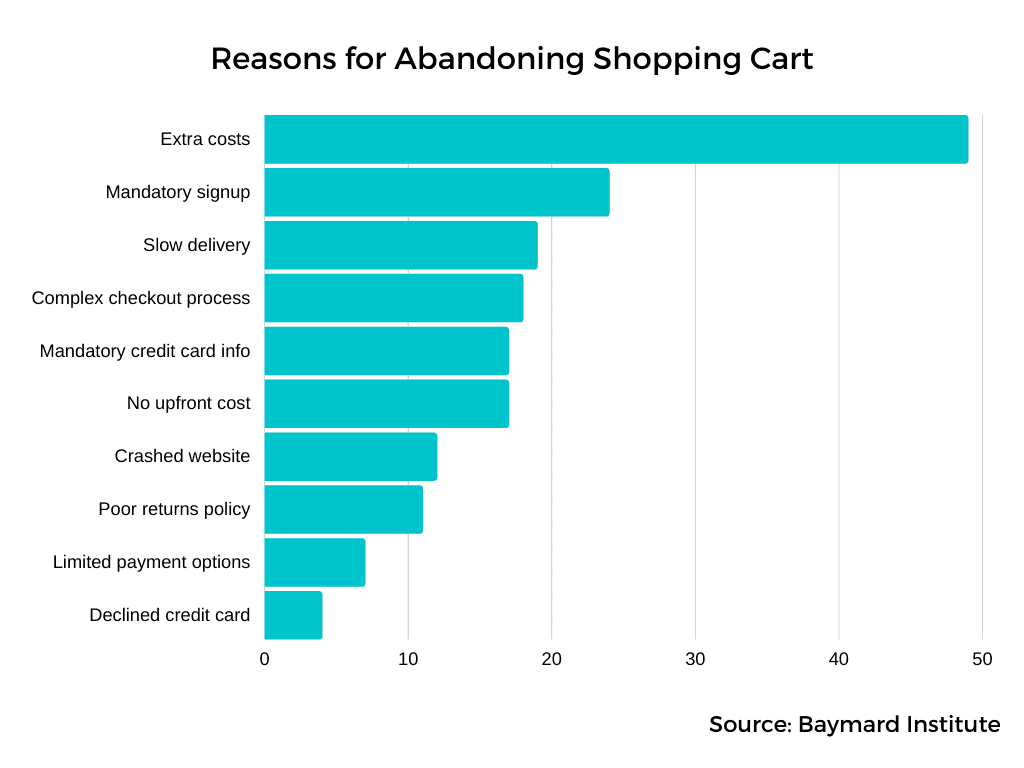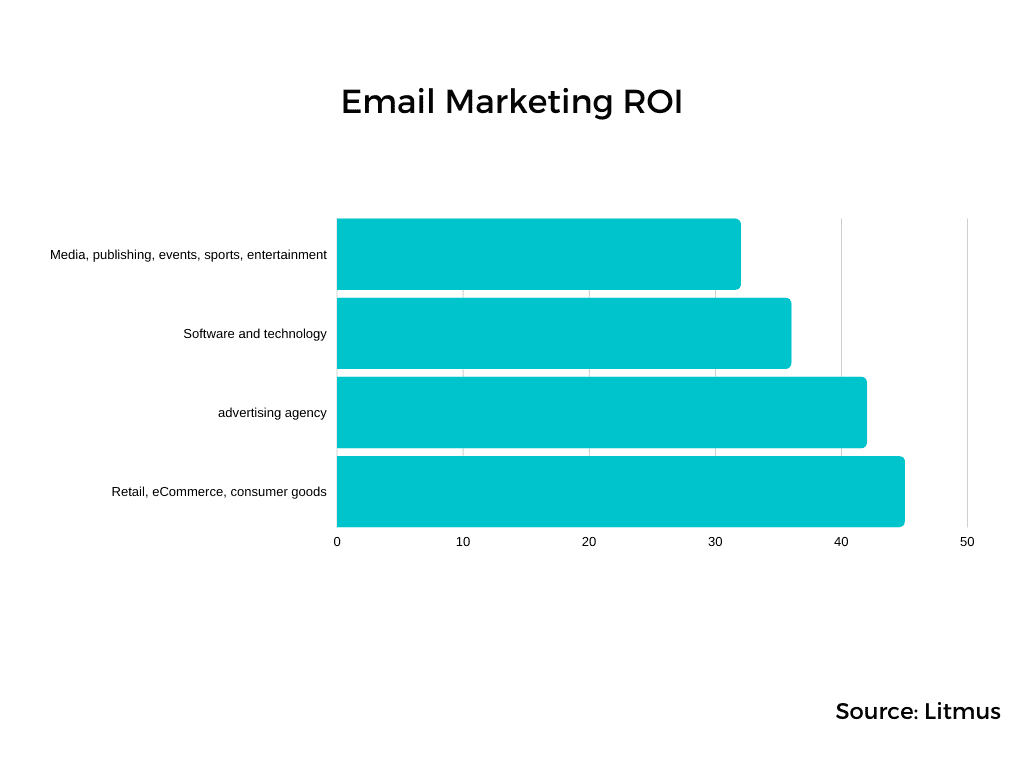If you’re wondering about eCommerce marketing ideas to increase online sales, you’re in the right place. With a predicted $7.4 trillion in global eCommerce sales by 2025, finding the right marketing strategies to increase your online success is a key factor in maximizing profit.
But with so many marketing strategies present today, choosing effective ones to maximize results can be challenging.
To save you time and effort, this article will reveal eight eCommerce marketing ideas, complete with statistics, to help you generate more sales and get the best return on investment.
1. Optimize Website Performance

Website performance, also known as site speed, refers to how quickly web pages fully load on a user’s web browser. Performance is a critical aspect to increase sales on your eCommerce store because 70% of consumers admit that page speed impacts their willingness to make an online purchase.
Research also shows that improving site speed increases conversion rates. Conversely, a slow-loading site gives visitors a poor browsing experience and negatively affects opportunities for transactions.
The first step to optimizing website performance is choosing the right web hosting service. Pick a plan that offers sufficient resources to support your eCommerce store, and pay attention to features such as bandwidth, allocated storage space, and memory.
The next step is consulting professional developers who can optimize your store, check its responsiveness, and advise on the best tools you can use to maintain it. If you have a Shopify store, for instance, the Shopify website development cost is definitely worthwhile when your optimized website will bring new customers.
There are multiple hosting types to choose from. However, consider opting for a virtual private server (VPS) for optimal performance. This hosting type comes with robust resources optimized for speed.
2. Offer Free Shipping
The main reason why customers fail to complete a purchase is unexpected extra costs, such as shipping, tax, and fees during the checkout process. In fact, research shows that these additional costs accounted for 49% of online shoppers abandoning their shopping carts.
Therefore, offering free shipping can help reduce cart abandonment rates and increase sales. Consider including these extra costs to your products’ displayed price, thereby letting buyers calculate the expected cost upfront.
Satisfied customers are more likely to complete a transaction without hidden or unexpected fees during the checkout stage.
3. Add Live Chat

38% of customers are more likely to purchase from businesses that offer live chat support. It plays a significant role in shaping the customer experience and increasing user engagement.
The same source also revealed that 79% of businesses say offering live chat positively affects sales, revenue, and customer loyalty. It is consistent with the fact that 63% of people who spend up to $500 a month on digital purchases are most likely to buy and be loyal to companies that offer live chat.
Despite such advantages, live chat services tend to have a bad reputation. 40% of customers have low expectations regarding the support quality they’ll receive from a live chat. Meanwhile, 84% of consumers have given up on live chat due to poor replies and slow responses.
Providing an excellent live chat experience on your eCommerce store helps overcome this problem. Avoid bot-generated replies and invest in a knowledgeable support team to meet customer expectations and train them to deliver personal, timely, and quality assistance.
4. Reduce Cart Abandonment
Cart abandonment accounts for $4.6 trillion worth of lost orders each year. Baymard reports the average cart abandonment rate to be 69.82%. Half of the survey respondents mentioned extra costs as the main reason, showing the importance of displaying accurate price estimates before checkout.
Following unexpected costs for cart abandonment is mandatory signup, slow delivery, and complex checkout processes. Simplifying the checkout process can improve conversion rates by 35.26%.

Do so by giving visitors the option to make purchases without registering an account and supporting multiple payment methods.
5. Incorporate Email Marketing
Email is a lucrative communication channel for marketers. By 2025, global email users are expected to hit 4.6 billion, while emails sent and received every day are projected to increase to over 376 billion.
Besides reaching a wide audience, email marketing also has a high return on investment, particularly in the retail, eCommerce, and consumer goods industry. It generates $36 for every dollar invested and encourages 60% of consumers to purchase.

If you want to engage in successful email marketing, add appealing images and visual content to your campaigns to increase retention. Studies show that readers process visuals 60,000 times faster than text.
Remember to resize your images to render quickly and smoothly on users’ devices. For example, you want to keep the ratio around 200 x 600 pixels for email headers.
6. Personalize Customer Experience

67% of eCommerce companies worldwide plan to invest more in personalization for their marketing strategies. That’s because around 71% of consumers feel frustrated with impersonalized content, while 72% only engage with brands that provide personalized interactions.
On top of improved customer engagement and loyalty, personalization also increases profits. A survey found that 26% of marketers saw a $3 to $5 return on investment for every dollar spent on personalization.
Creating personalized marketing campaigns requires accurate customer data. Analytic tools such as Google Analytics or Kissmetrics can help monitor how customers interact with your eCommerce site – thereby allowing you to gain insight into their preferences and shopping habits.
From there, you can start developing campaigns and content that resonate with each customer. Recommend products relevant to their previous purchases and create personalized “Welcome back” messages each time a returning customer logs into your store.
7. Create Customer Loyalty Programs
Rewarding repeat customers is an effective way to foster loyalty, increase retention, and encourage engagement. With such advantages, businesses worldwide spend around $75 billion on this marketing strategy. A survey also found that 71% of members say joining loyalty programs is a meaningful part of their brand relationship.
Businesses can decide which incentive to use for their loyalty programs. It can vary from rewarding loyal customers with free items, special discounts, or cash backs.
On top of attractive rewards, encourage customers to join the program by offering attainable benefits. If points are too difficult to earn or redeem, customers can feel discouraged to engage with your program.
8. Build Facebook and Instagram Stories

Global sales through social media platforms will reach around $2.9 trillion by 2026. More and more social platforms have launched social commerce features in response to this potential.
Facebook and Instagram are incredibly lucrative platforms for eCommerce marketing since both channels have high engagement rates. Instagram also found that nearly half of 4,500 survey respondents worldwide use the platform to shop weekly.
If you’re planning to advertise and sell on social media, the Commerce Manager tool can help manage catalogs on both platforms.
Conclusion
Implementing eCommerce marketing efforts into your business is crucial for attracting more buyers and increasing online sales. By learning the strategies above, researching well, and staying consistent with your efforts, you can expect long-term results and increased profits.
Here’s a recap of the marketing ideas mentioned in this article:
- Optimize site speed
- Offer free shipping
- Add a live chat feature
- Reduce cart abandonment
- Incorporate email marketing
- Offer personalized customer experience
- Create customer loyalty programs
- Leverage Facebook and Instagram stores
Take these measures to start making more sales and run a profitable business. Good luck!

